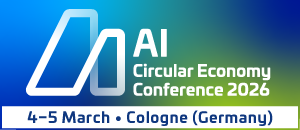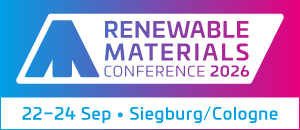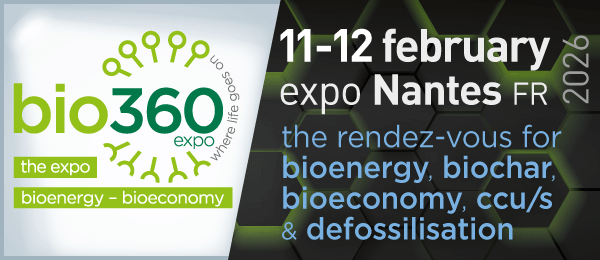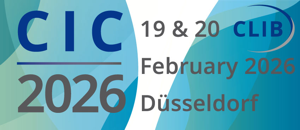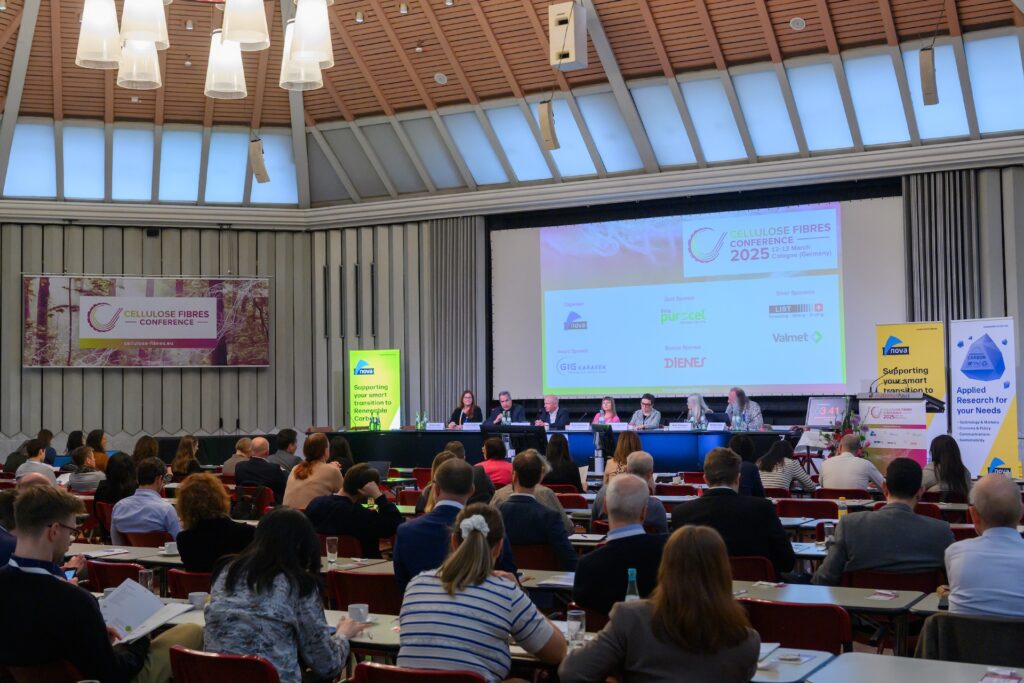
The Cellulose Fibres Conference 2025 (CFC 2025), held on 12-13 March in Cologne, Germany, successfully brought together industry leaders, innovators and researchers to explore the latest innovations and new technologies for fibres – in textiles, hygiene products and packaging. The conference has established itself as the leading international platform for the emerging cellulose fibre industry. Two days with high quality program and outstanding speakers highlighted the growing importance of addressing environmental concerns within the textile industry.
The main source for the production of staple fibres or filaments such as viscose, lyocell, modal or other types of new cellulose fibres is wood-based chemical pulp. At the same time, new sources such as agricultural wastes and fibres, paper grade pulp and recycled textiles are emerging on a global scale, with a variety of new sources and companies contributing new technologies, processing methods and ideas.
Biosynthetics, featured for the first time at the conference, drew significant attention. Experts discussed the challenges and opportunities of cellulose fibres and biosynthetics, with particular focus on scalability, biodegradability, and performance comparisons to conventional synthetic fibres from fossil origin.
Dynamic Engagement and Scientific Discourse
The CFC 2025 fostered vibrant discussions among attendees, with a strong emphasis on scientific advancements and sustainable practices. Participants actively engaged in sessions covering topics such as circular economy strategies fibre-to-fibre recycling from textile, marine biodegradability versus fibre microplastic formation, alternative feedstocks, and innovative technologies for pulp, fibres, biosynthetics, and yarns.

Rahul Bansal, Vice President & Head of the Global Nonwoven Business at Birla Cellulose (IN), emphasises the significance of the event: “The Cellulose Fibres Conference (CFC) has provided a unique and focussed platform to the entire value chain of cellulosic fibres for knowledge sharing and making business connections. With global shift towards plastic free products, cellulose based fibres and allied industries are witnessing influx of investment in process development and innovation to improve sustainability of the products. I am confident that the conference will become even more important in future with the growing proportion of cellulose fibres in the textile industry.“
Andreas Engelhardt, The Fiber Year (CH), reported strong investment in new cellulose fibre production plants, with around 200,000 tonnes of additional capacity per year worldwide. Marina Crnoja-Cosic, Textile ETP (BE) confirmed this trend, with annual capacity growth of 17% between 2024 and 2029 and investments almost exclusively in Lyocell production. Simone Seisl, CR Consultant (DE), said that Lyocell is mainly replacing old viscose production and cotton, as cotton production is stagnating or even declining, partly due to climate change – and that the overall demand for textile fibres is increasing.
In order to support the development, innovation and market entry of cellulosic fibres, Dieter Eichinger, CIRFS (BE), presented a proposal for a new standard that includes all types of cellulosic fibres such as Viscose, Lyocell, Tencel, Modal, Cupra and new innovative fibres under the generic term “cellulose fibres”. The proposal was widely supported by the participants. Anna Palmberg, IKEA (SE), also expressed a concrete interest in using more cellulose fibres in the future.
The event witnessed heightened activity on social media platforms, with delegates sharing insights, experiences, and key takeaways using the hashtag #CFC2025. This digital engagement extended the conference’s reach, allowing a broader audience to participate in the discourse on sustainable textiles.
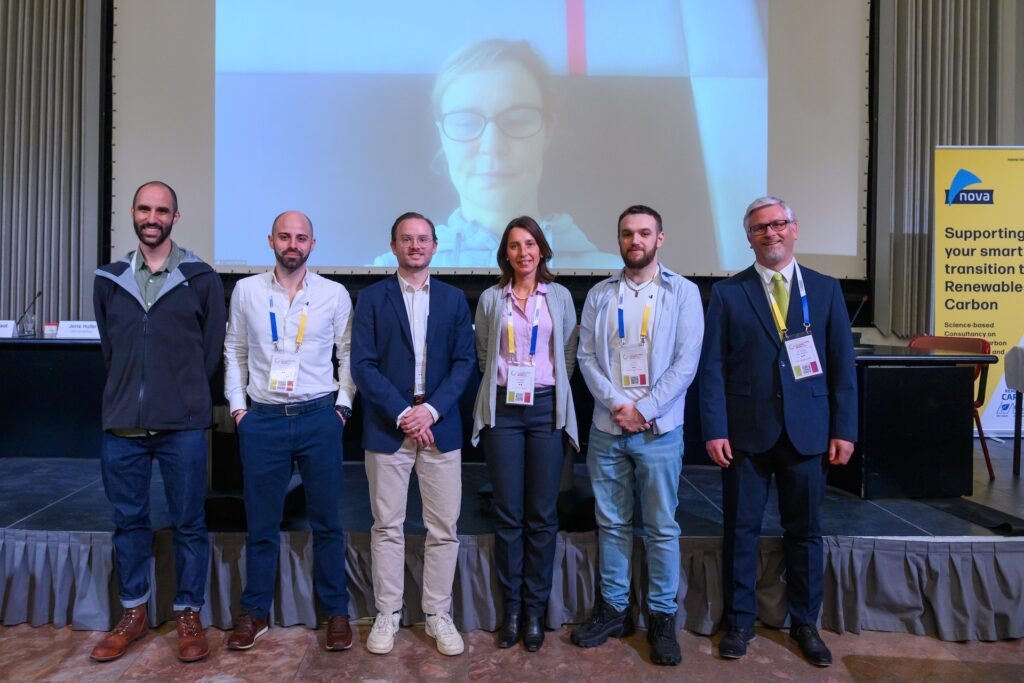
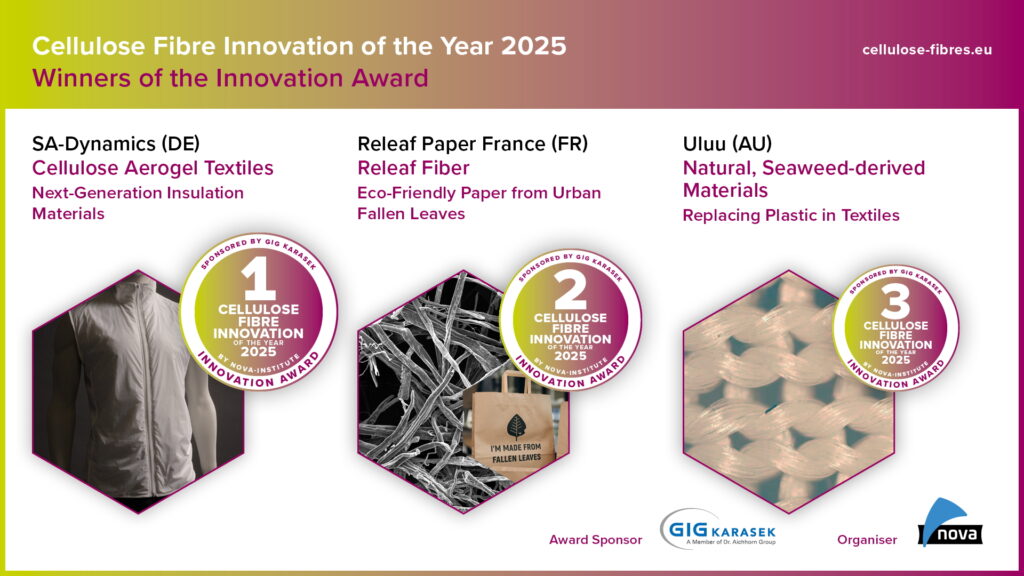
Innovation Award winner announced
The announcement of the “Cellulose Fibre Innovation of the Year 2025” award winners was undoubtedly one of the highlights of the conference. Sponsored by GIG Karasek, the award recognises groundbreaking developments in the field. Every year, the award recognises the three most promising innovations in the field of cellulose fibres, highlighting groundbreaking advancements and their potential impact. This year, for the first time, the award also offered the opportunity to recognise innovations in the field of biosynthetics. The top three outstanding technologies were honoured this year for their remarkable advancements. These three pioneers will certainly pave ways in the future of the sustainable fibres industry:
1. SA-Dynamics (Germany): Cellulose Aerogel Textiles
SA-Dynamics introduced revolutionary insulation materials made from 100% biodegradable cellulose aerogel fibres. These materials combine the flexibility of traditional fabrics with the superior thermal insulation properties of aerogels, offering a sustainable alternative to fossil-based and animal-derived insulation materials in textiles as well as in construction. https://sa-dynamics.com
2. Releaf Paper France (France): Releaf Fiber
Releaf Paper France transforms urban fallen leaves into sustainable cellulose fibres, providing an eco-friendly alternative to traditional hardwood pulp. Their proprietary low-temperature extraction process yields high-quality fibres ideal for packaging materials, aligning with circular economy principles by repurposing urban leaf waste. https://www.releaf-paper.com/releaf-fiber/
3. Uluu (Australia): Seaweed-Derived Biosynthetic Materials
Uluu is set to replace plastics in textiles with natural PHA polymers, derived from farmed seaweed. In partnership with Deakin University, Uluu is developing textile fibres that perform like synthetic polyester but are biodegradable in various environments, eliminating persistent microplastic pollution in fashion. https://www.uluu.com.au
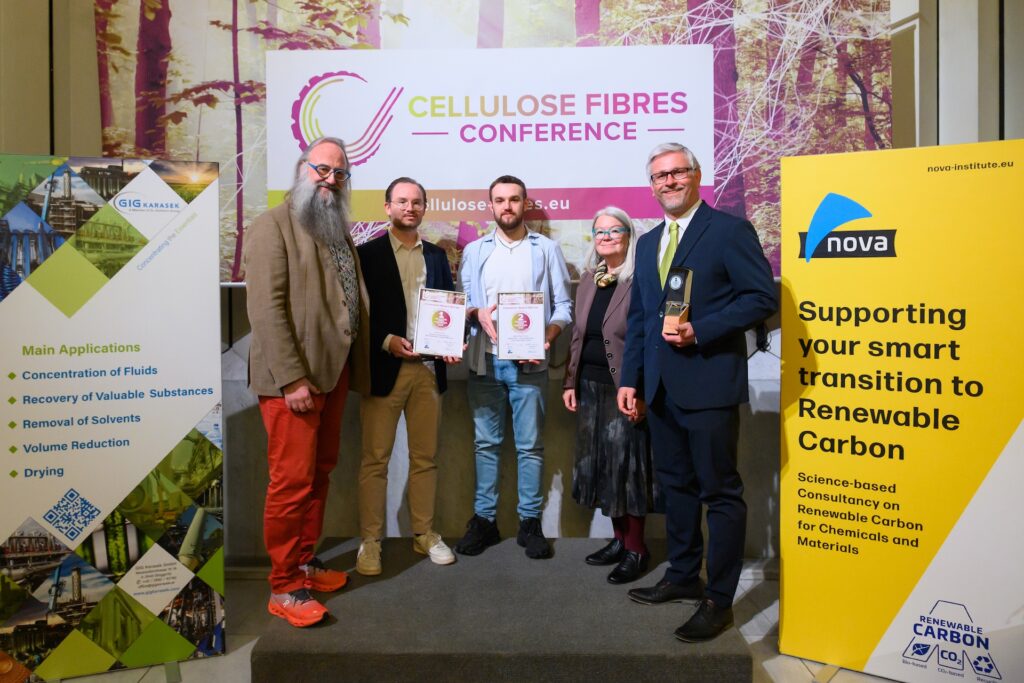
Acknowledging Sponsors
The organisers extend their gratitude to all participants, speakers, and sponsors, whose support was instrumental in the success of the Cellulose Fibres Conference 2025. Especially our sponsors GIG Karasek, Birla Purocel, List Technology AG, Valmet and DIENES played a pivotal role in making the event possible. The collective efforts of all involved have set a new benchmark for innovation and collaboration in the pursuit of sustainable solutions within the textile industry.
DDI Wolfgang Aichhorn, MBA, Head of Sales & Marketing at GIG Karasek, highlights the innovative spirit of the event: „Every year, we are impressed by the outstanding innovations at the Cellulose Fibres Conference, showcasing the immense potential of sustainable fibres.”
In addition to the professional programme, the conference provided ample networking opportunities. The new matchmaking tool drove meaningful connections, with over 50 meetings scheduled at the conference, encouraging collaboration and innovation among attendees. One of the social highlights was an evening of German bowling, which fostered a lively and competitive atmosphere. Attendees enjoyed the blend of tradition and fun, creating an excellent setting for informal discussions and strengthening industry connections.
With the success of CFC 2025, the momentum towards sustainable and bio-based textile solutions continues to grow, reinforcing the industry’s commitment to shaping a greener future.
Source
nova-Institute, press release, 2025-03-20.
Supplier
Birla Cellulose
CIRFS
CR Consulting
Dienes Apparatebau GmbH
Fibers365
GIG Karasek GmbH
IKEA
List AG
nova-Institut GmbH
Releaf Paper
SA-Dynamics
Sci-Lume Labs
Textile ETP
TMG Automotive (PT)
Uluu (AU)
Valmet
Share
Renewable Carbon News – Daily Newsletter
Subscribe to our daily email newsletter – the world's leading newsletter on renewable materials and chemicals







